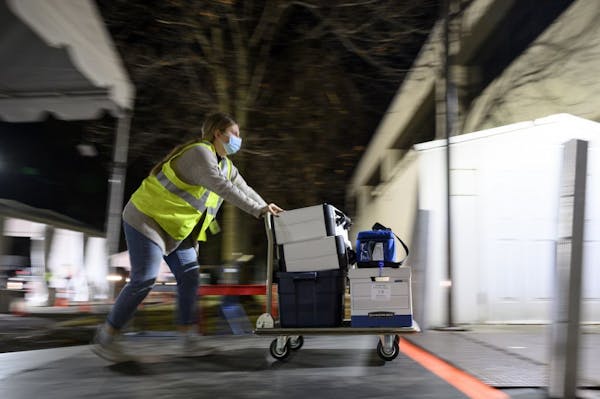An estimated 3.2 million Minnesotans voted in Tuesday's general election — either via absentee or in person — making for a 78% turnout that would be the highest in the state since 2008. Results were still trickling in Wednesday, with some races too close to call.
But some outcomes and consequences of the vote were clear by Wednesday. Here's a look at four key takeaways so far here in Minnesota:
Democrats continue statewide win streak
Battleground Minnesota wasn't so close in the end. Democrats continued their decadeslong streak of presidential victories here, as nominee Joe Biden defeated President Donald Trump by a comfortable margin. As of this morning, Biden was ahead 52%-45%. High turnout and vote totals in DFL strongholds such as Hennepin County appeared to seal the big win.
U.S. Sen. Tina Smith also won a full six-year term over Republican challenger Jason Lewis, but by a more narrow, 5-point margin. That spread lagged her 2018 special election win and U.S. Amy Klobuchar's typically strong performance statewide.
DFL Rep. Collin Peterson falls
Republican Michelle Fischbach defeated longtime U.S. Rep. Collin Peterson, ending the moderate Democrat's decades long tenure in Congress. The Seventh Congressional District had trended Republican for years, with Trump carrying the western Minnesota seat by 30-points in 2016. Trump won by a similar margin this year, sealing victory for Fischbach.
Peterson, a rare conservative Democrat in the U.S. House, was the chair of the House Agriculture Committee and the last Minnesota Democrat left representing a rural district in Congress. Fischbach said Wednesday that she'll ask to be added to the committee next year.
In the Second Congressional District, Democratic Rep. Angie Craig declared victory over Republican Tyler Kistner with a narrow lead Wednesday morning. Republican Rep. Jim Hagedorn, meanwhile, did the same in his bid against Democrat Dan Feehan in Southern Minnesota's First Congressional District. Neither race has been called by the Associated Press at this hour.
More divided Minnesota government on the horizon
The outcome of the fight for control of the Legislature remained tough to call overnight, with ballots apparently outstanding in a number of key races. But if the current results hold, Minnesota is on track for another two years of divided government in St. Paul. Senate Republicans are on track to retain a narrow majority in the upper chamber, while House Democrats are poised to maintain a majority in their chamber. Updated counts in some contested races could still shift the balance of power.
The final outcome will have significant implications for state policy, as legislators and DFL. Gov. Tim Walz prepare to address issues such as the budget deficit, the pandemic and redistricting next year. Given the stakes, outside groups spent heavily to influence the outcome of the races. But in the end, it appears voters split the ticket, backing Republican legislators in districts that Trump lost.
Marijuana candidates play a role
Minnesota's Legal Marijuana Now Party appeared to play a pivotal role in key races this year. Second Congressional District Legal Marijuana Party nominee Adam Weeks, who died unexpectedly weeks before the election, has picked up more than 24,000 votes in the close race between Craig and Kistner. In the U.S. Senate contest, the party's nominee won nearly 6% of the vote.
Marijuana candidates were also on track to secure consequential shares of the votes in targeted state legislative races, potentially playing a spoiler role for Democratic incumbents and challengers. The party's nominee was carrying 7% of the vote in a tight contest for a GOP-held Senate seat in St. Cloud. The GOP incumbent, Sen. Jerry Relph, was leading by just three points Wednesday morning. And in Shakopee, where DFL Rep. Brad Tabke trailed his GOP challenger by 2 points, a Legal Marijuana Now candidate had secured more than 7% of the vote.
Torey Van Oot • 651-925-5049
Carolyn Parnell, 'trailblazer' who served as Minnesota's first IT commissioner, dies


